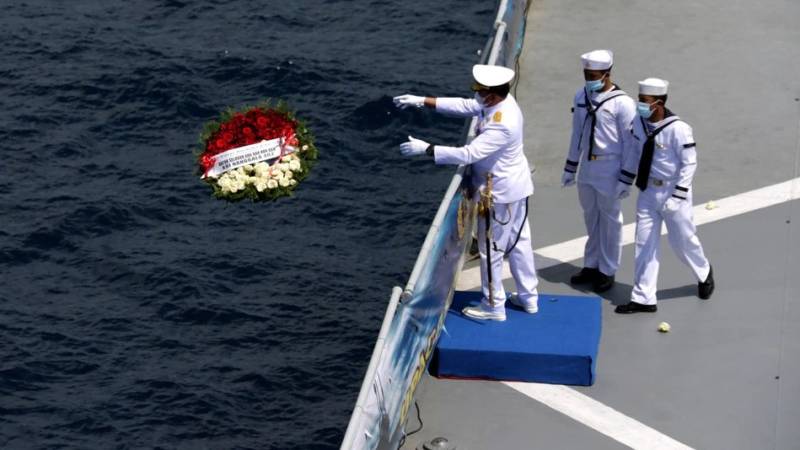Indonesia to salvage submarine after deadly sinking disaster

Stay tuned with 24 News HD Android App

Indonesia said Friday it will salvage a submarine that sank off the coast of Bali, as grieving relatives paid their respects to the dozens of crew killed in the disaster.
Authorities had yet to confirm if they would try to haul up the KRI Nanggala 402 from the sea floor after it was spotted cracked in three pieces.
The navy on Friday said it was waiting on the arrival of two ships, including a vessel sent by China, that are equipped to handle deep-sea salvage operations.
High-powered magnets and air balloons were among the possible options, but how and when the cracked submarine would be brought to the surface was uncertain, said navy chief Yudo Margono.
"It's hard to talk about specific timing, but I can say that as soon as help arrives, we'll start," he told reporters.
The submarine's 53-strong crew are believed to still be inside the vessel, Margono said.
An underwater rescue vehicle supplied by neighbouring Singapore gave visual confirmation that the German-built sub was lying on the sea floor more than 800 metres (2,600 feet) deep.
The eerie images were final confirmation that there was no hope of finding survivors.
On Friday, victims' families cast flower petals from a navy ship into waters where the sub went down as part of a remembrance ceremony.
Many wept and hugged as one could be heard saying "bye, bye daddy", while a couple of relatives collapsed as they were overcome with grief.
The submarine -- one of five in Indonesia's fleet -- disappeared last week while it was scheduled to take part in live torpedo training exercises.
The crew asked for permission to dive. It lost contact shortly after.
Later, search teams spotted an oil spill where the vessel was thought to have submerged, pointing to possible fuel tank damage and a catastrophic accident.
The military has yet to offer an official explanation for the sinking of the decades-old submarine, which was delivered to the Southeast Asian nation in 1981.
It has said, however, that the reconditioned vessel was seaworthy and discounted the possibility of an explosion.
The navy has said that the submarine may have suffered a blackout and left the crew unable to perform emergency measures.
Its hull would have been torn apart as it sunk to depths far below what the KRI Nanggala was built to withstand, they said.
The submarine's former commander, Rear Admiral Muhammad Ali, has told local media that a so-called internal solitary wave could have been to blame.
The natural phenomenon occurs when different sea depths come together, creating forces that could have dragged the vessel down, he said.
The disaster was among a string of fatal submarine accidents over the past few decades.
Among the worst was the 2000 sinking of the Kursk, the pride of Russia's Northern Fleet.
That submarine was on manoeuvres in the Barents Sea when it sank with the loss of all 118 aboard. An inquiry found a torpedo had exploded, detonating all the others.
Most of its crew died instantly but some survived for several days before suffocating.
